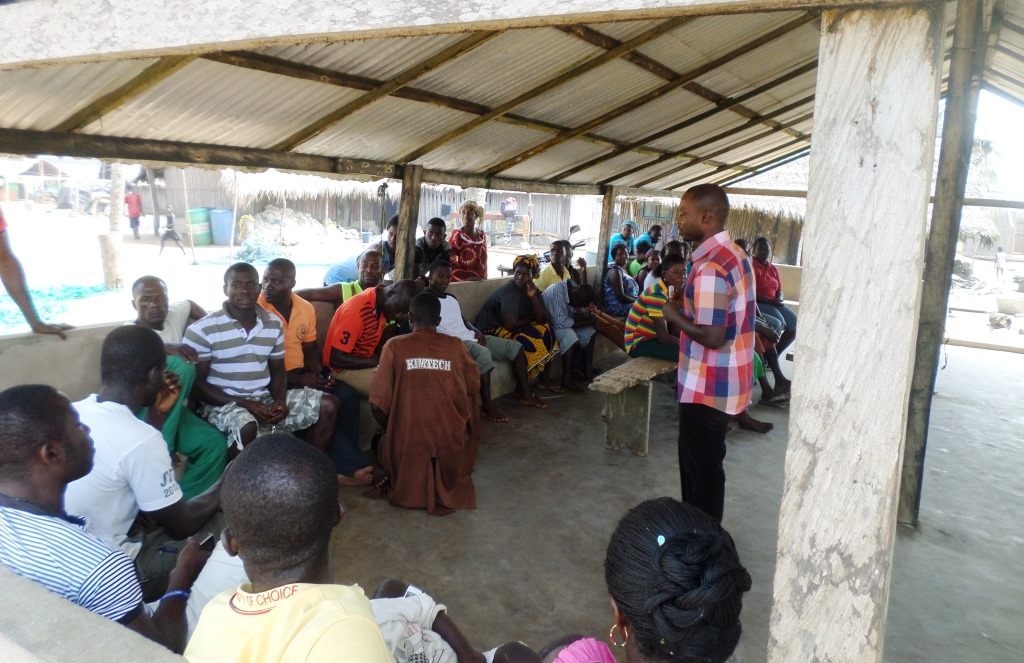“He who feels it, knows it.” This phrase aptly describes a situation that community-led development planning is facing nowadays: the competition for resources is stiff, and the demand for utilization is increasing by the day. Therefore socio-development planning within such challenging context cannot be left in the hands of bureaucrats who often are not resident in affected communities.
The Western Region with its abundance of natural resources is thus prone to climate related stressors and hazards in the coastal communities and associated ecosystems. These include extreme rainfall leading to flooding and rapidly eroding shorelines, the result is displacement of settlements. Others are sedimentation of rivers, invasion of coastal water by hitherto unknown marine plant species referred to simply as algal bloom, or drying up of coastal wetlands which serve as habitats for marine and terrestrial flora and fauna species, and loss of fishery resources.
District Assemblies need a lot of pragmatic measures and resources to handle the growing coastal populations and the increasing demand for development on coastlines. Effective land-use and spatial planning is therefore crucial. This has led to the need to understand and characterize the vulnerability of coastal settlements through community-led action plans that will be incorporated into the Districts’ Medium-Term Development Plans of Local Governments.
To increase response to the complex coastal resources management and climate change vulnerability issues, Friends of the Nation (FoN), in collaboration with the Shama and Jomoro District Assemblies and Fisheries Commission, facilitated community-led action planning in 31 coastal communities – 23 in Jomoro and 8 in Shama. These activities formed part of the “Bridging Gaps in Local Governance through Social Accountability” project supported by Strengthening Transparency Accountability and Responsiveness in Ghana (STAR Ghana).
The overarching objective of these exercises was to assist the preparation of local plans for selected communities. They generate additional understanding and appropriate responses to the changes of managing coastal resources. These action plans will then be incorporated into the Districts’ Medium-Term Development Plans (DMDTPs).
Through a social mapping exercise, the communities identified the coastal resources in their area describing which have been lost through natural or human-induced factors. To contribute to conserving and protecting the resources available now, the communities came up with objectives, specific activities, as well as designated roles and responsibilities to address current and future challenges in order to achieve sustainability in the face of scarce or dwindling resources. Worth noting: communities identified their own roles and those of relevant stakeholders, and designed participatory plans, recognizing the fact that government investment in terms of finances will continue to be negligible for some time to come and therefore cannot be relied upon. This is nonetheless very important as it complements resources the communities themselves can generate with partners’ support.
The exercise revealed that many coastal settlements are directly impacted by hazards and climate related risks. These include presence or proximity to a river or to an estuary, high water mark in settlement, presence and, or functionality of sea defense walls, condition of coastal bridge, risk level to floods, a history of coastal erosion, community backed by a wetland/lagoons and presence of dynamic or peculiar coastal features along the beach.
Assemblies won’t be able to meet all the citizens’ development needs, looking at their limited financial resources. Therefore issues like construction of sea defense walls which are capital intensive projects cannot be handled by the Assemblies. During the exercise, assembly officials acknowledged the efficiency of working with civil society in the process. The communities on the other hand openly appreciated the Assemblies’ capabilities. They however were emphatic with the demand that the Assemblies should be open with information and regularly communicate revenue issues and others with them to increase trust.
Like this, community action planning exercises become opportunities to project into the future and make pragmatic plans to meet head-on the mitigating issues.
In Jomoro, one community youth said: “the Assembly is wrong in allowing people to win sand on the beach and collecting tax from them. This is aggravating the communities’ vulnerability to coastal flooding and we shall advocate its immediate stop.”
The exercise did not only stimulate community-led actions to address coastal resources management and climate change issues in isolation, but empowered them to think and plan holistically. Like this, grassroot communities start advocating an integrated approach for solving complex issues in coastal resources management. In Bosomdo in the Shama District, one participant in the exercise said: “We in the community are ready to undertake activities to conserve our wetlands by replanting mangroves and stop polluting it with rubbish. However, what about those polluting it with dangerous chemicals upstream the Pra River through illegal mining activities? All our effort will be in vain if their activities are not regulated. Their action are destroying our fisheries livelihood, and source of drinking water.”

